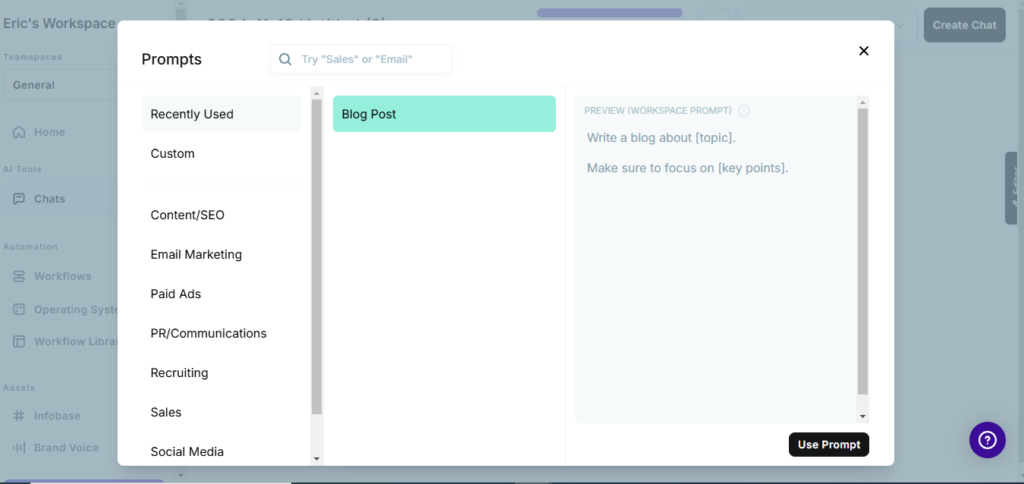I know, I know. You want to write blog posts for your website in the least time possible. Worry not. Automating blog writing using AI has become a game changer in the content creation industry.
How will you achieve this? Well, in this guide, I’ll take you step by step on how you can automate blog writing using the help of AI tools dedicated to performing such tasks. This will save you a lot of time, and at the same time, you will produce SEO-optimized blogs for your website.
What you’ll learn:
- How to automate blog writing using AI
- AI tools to help you automate blog writing
- Tips on how to effectively automate blog writing.
But first, let’s understand some of the things we are talking about
What is blog writing automation?
So, you’re a writer or a blogger in this case; you have endless ideas that you need to turn into helpful and engaging blog posts, and you need to write some of these ideas as quickly as possible before websites with higher domain authorities start ranking for them.
What do you do?
Well, you turn to blog writing automation, a method that will help you create your blog faster and better by leveraging AI writing tools. Don’t worry, we shall discuss these tools in a few.
Why is it important for bloggers?
Time-saving and content brainstorming are the ultimate reasons we use blog writing automation. Before AI tools entered the market, bloggers and online writers had to handle every step of content creation manually. Phew! must have been tiring and time-consuming. In the yesteryears, a typical blogger would spend more than 8 hours drafting, researching, and writing a blog. In the AI era that we are in now, a typical blogger writes a blog of 1000 words in less than 2 hours. The difference in time is seen due to most bloggers automating the blog writing process.
How Does AI Automate Blog Writing?
My intermediate programming knowledge tells me that AI tools use advanced algorithms based on natural language processing (NLP) and machine learning to understand and write like we humans do. Complex, right?
This process works as follows:
- You provide an initial prompt or idea, and AI processes this input. Then,
- The AI uses its trained models to generate relevant content based on the prompt you give it.
In short, you can think of AI as an assistant that you tell to bring you hot coffee using the backdoor, and they do just as they are told.
Top AI Tools for Automating Blog Writing
Several AI tools are tasked with the job of automating blog writing. Below is a list of well-analyzed AI tools to help you write your blog post in the least time possible:
1. InkForAll (formerly Ink editor)

You could think of it as a cheaper version of SurferSEO. The good side of InkForAll is that it offers a free trial that enables you to access all premium features for 5 days. This tool promises you that you’ll dominate your niche organically, be free of plagiarism, and your content will have increased relevance and quality.
InkForAll Main Key Features:
- Automated blog writing: The tool writes content in a stage-by-stage format. i.e., introduction, body paragraphs, and conclusion). Then you simply click the run recipe button, and voila! you have your content ready.
- SEO content score: After generating content or bringing your own content, the tool will give you an SEO score based on the keyword you provide. Just like the SurferSEO content score or rank math. This is really important in Google ranking. According to Inkforall, your content is 450% more likely to rank number 1 in search results with semantic SEO.
Pros and cons of InkForAll:
| Pros | Cons |
|---|---|
| It offers a real-time SEO scoring, keyword suggestions, and optimization that help bloggers improve rankings and visibility on Google. | Beginners might need some time to get used to the interface. |
| Great for team usage. | The free plan has limited functionality, requiring a subscription to access advanced features like competitor analysis. |
InkforAll Pricing

The tool offers the following pricing plans:
- 5-day free trial.
- Professional plan: starting at $39 monthly.
- Enterprise plan: starting at $99 monthly.
NB: InkForAll offers a 5 day free trial with limitation to use 10,000 words. The better part is you dont need a credit card to start using the free trial.
2. Copy.ai

This is a writing AI tool dedicated to helping content creators and business people write with ease. Copy ai has a chat feature where you add a prompt of what you want it to write about, and then it generates the output in a span of a second. Pretty much the same as other writing tools.
Main Copy.ai features:
- Ability to brainstorm ideas.
- Long-form content generation. It has a word counter to check how many words your blog post is.
- Offers a real-time search feature, which is important if you need to scan through a competitor’s website fast to either get inspiration or countercheck something.
Pros and cons of Copy.ai:
| Pros | Cons |
|---|---|
| Fast Content Generation | You’ll need a pro version to enable your output to be from advanced models like GPT-4, GPT-4o and all Claude 3 haiku models |
| Blog post ideas brainstorming, which is very crucial since sometimes the human brain just cannot process everything. | Just like most AI tools, it tends to repeat itself. |
| Has readily available prompts. You just need to add your topic and keyword. | You’ll need to edit the output manually after generation and crosscheck important data. |
Copy.ai Pricing

Copy.ai offers the following plans:
- Free plan, which enables you to generate content up to to 2000 words and 200 workflow credits
- Starter plan starts at $36 monthly.
3. Writesonic

According to my experience with the tool, Writesonic is the mother of all AI writing tools. In fact, I always use this tool to draft my initial blog post and then humanize the content afterward, which usually consumes less time. What I like most about the tool is its in-depth research capabilities.
Writesonic main features:
- It has a built-in SEO checker feature.
- The tool has a humanizer feature.
- There is a rewrite feature in case you didn’t like the first output.
- Content gap analysis, which compares your blog against top-ranking competitors. (my favorite feature)
| Pros | Cons |
|---|---|
| It generates a wide range of content types, helping users quickly produce quality content. | Limited free version with only 25 credits. Once these credits are used, there’s no way to generate additional content unless you upgrade to the pro version. |
| Humanized writing. | On the free version, the tool tends to produce shorter pieces of content compared to what’s possible with the pro version. |
| Writesonic SEO Tools help to improve your content ranking in search engines: | |
| Writesonic has a wide range of templates to choose from. E.g., Blog, email, general writing, etc. | |
| It has a Google Chrome extension for ease of access |
Writesonic Pricing

A breakdown of Writesonic pricing;
- Free plan with 25 credits (unrenewable)
- Individual plans start at $16 monthly when billed yearly.
- Standard plan starts at $79 monthly when billed annually.
4. Frase

Frase has been in existence since 2016, and over the years it has made big strides towards becoming a tool that helps with automating blog writing. It’s similar to Writesonic to a certain percentage. It has been a go-to AI writing tool for a lot of renowned bloggers.
Frase main features:
- SEO optimization capability. The tool displays an SEO score for your content and also lets you compare the content to your competitors.
- Their AI content is research-based.
- Integration with other writing editors like Google Docs and WordPress.
- Team collaboration where you assign your document to different writers.
Pros and cons of Frase.io:
| Pros | Cons |
|---|---|
| The tool has features like keyword research, content scoring, and SERP analysis to improve SEO. | The pricing plans can be quite costly, especially for small businesses or individuals on a budget. |
| it automates much of the content creation process | The tool can prove overwhelming to use at first |
Frase.io Pricing

Frase.io offers the following pricing plans:
- Free trial
- Solo Plan starting at $15 per month
- Basic plan starting at $45 per month
- Team plan staring at $115 per month
Other tools that help with automating blog writing using AI
Here is a list of the AI tools that you should also have a look at:
- ChatGPT
- Claude AI
- Jasper AI
- Rytr
- Contentbot
- Scalenut
- Brandwell
Benefits of Automating Blog Writing with AI
- Time Efficiency
Years ago, blog writing used to consume a lot of time. But with the introduction of advanced AI writing tools, this has changed significantly, and writing a blog post now takes about 2-3 hours to write and publish.
- Consistency
Since you’ll be creating content easily through blog writing automation, you’ll find yourself posting consistently, which is a healthy practice for your blog/website.
- SEO Optimization
Many of these AI tools I have listed above come with built-in SEO features that optimize your content for search engines.
- Creativity Boost
These tools suggest content ideas that you would not have thought of, making them essential in content idea generation.
Steps to Automate Your Blog Writing with AI
Below is a step-by-step guide to help you start automating your blog writing process:
Step 1: Choose the Right AI Tool
This doesn’t mean that some AI tools are bad. But most definitely, some AI tools can do some extra work compared to others. Some are not incorporated with the SEO optimizer feature. And of course, you have to pick a pocket-friendly tool.
Step 2: Set Up Your AI Tool
Sign up for an account and start a free trial that most of these tools offer. Then, try putting it a keyword of your choice and compare different outputs from different AI tools.
Step 3: Generate Content Ideas with AI
Simply input a keyword or topic, and let the AI suggest topics that are relevant and trending. The better you write your prompt, the better the results.
Step 4: Create an Outline
Ask the AI to generate a content outline based on the keyword you provide. You can tell it to include certain headings if you have some in mind.
Step 5: Create the content
Once you have your outline, ask it to generate SEO-optimized content stage by stage. Start with the introduction, the meta description, what the readers will learn, the body of the content, and the conclusion. You could add a FAQ, which is important.
Step 6: Edit and humanize your content
You need to humanize the content generated. Learn how to humanize content here. Add personal experiences and cross-check the data provided by AI to make sure its correct.
Step 8: Publish and Monitor Performance
After publishing your post, monitor its performance using tools like Google Analytics to see how well it ranks. By doing this, you’ll know if the AI tool you used to automate your blog writing is worth it or not.
Tips for Maximizing AI’s Effectiveness in Automated Blog Writing
- Combine AI with keyword research tools and SEO platforms like rank math to make sure the quality of your content is in check
- Make sure your content stays in line with your niche and addresses the needs of your readers. (Really important)
- Always treat the content generated by AI as a draft. Never make the mistake of copying and pasting directly without adding your own personal touch and experiences
Common Challenges of Automating Blog Writing with AI
Quality Control
AI is not usually 100% perfect. Edit the draft to make sure you touch on things that AI might not have a clue about. Quality is brought by a human touch to the content.
Over-Reliance on AI
Don’t rely so much on AI. It should only act as an assistant.
Repetition.
AI sometimes tends to repeat itself. Especially at the introduction phase. You’ll find most AI’s using a sentence starting with ‘whether.’
Final Thoughts
Don’t misuse the automation in blog writing. Always consider the content produced by AI writing tools as a draft. Make sure to add your own experiences and challenges so that your content can become engaging with your audience. Never copy, paste, and publish any content generated by AI as your final blog post. You’ll definitely be on the wrong side of content creation.
Use the tools to write your blog posts, but always make sure to humanize the content.
FAQs
1. Can AI really write blog posts?
Yes. AI can generate blog posts quickly, but you’ll need to humanize the content yourself.
2. What are the best AI tools for beginners?
Tools like chatGPT and InkForALL are great for beginners because they are beginner friendly.
3. How much time can I save using AI for blog writing?
AI will save you several hours a week. Expect to write simple blog posts in a span of 1-2 hours.







